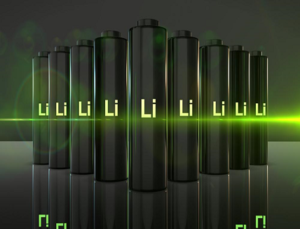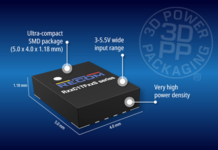
Adoption of lithium-ion batteries has been a significant subject of industry investment with a CAGR of 8%. The global market for lithium batteries is likely to reach 28 billion dollars by the end of 2018. Be it Tesla—leading autonomous cars manufacturer—or Apple and Samsung—the leading tech giants—everyone is rushing forward to invest in the Li-ion market. In a recent request for qualification bid by ISRO, more than 137 Indian companies showed interest for technology transfer of Li-ion battery manufacturing. One of the most critical components required for manufacturing Lithium battery is Dry Rooms. Building Dry Rooms, be it either for R&D purpose or mass scale production of lithium batteries require a very high level of proficiency and knowledge of the subject. Handling needs the specialised expertise of heat load and moisture load calculation, and hence, dry room designing and construction is said to be a complicated process.
In 1991, a standard battery was of 80Wh/Kg which today has increased to 250Wh/kg. These innovations of high energy density, fast production processes and fast charge (wireless charge) have led to the possibility of significant defects in the batteries for even the smallest laxity in the DryRoom norms. The Samsung Galaxy Note 7 is one such example of battery failure. This failure in battery and fast heating led to:
- Return of 3 million devices
- The multi-million costs in suites due to injuries
- Loss of reputation
Why Do Lithium Batteries Fail?
Manufacturing of lithium-ion batteries is a technical process that has some challenges and complications. The most important one amongst them is that the processing of electrodes must be done under least humidity conditions. Relative humidity lower than 1% (-350C or -40oC dewpoint) and a low particulate environment are the necessities for production of quality electrodes. While clean rooms provide ambient moisture conditions for semiconductor manufacturing, they contain at least 30 times more humidity than the required for Li-ion manufacturing. When water penetrates the batteries, the lithium salts used as electrolytes become unstable. They start reacting with moisture and generate hydrogen fluoride, which leads to gassing and bloating up of the battery, reducing its life.
How to Control Lithium Battery Failure?
To control humidity levels and environmental conditions dry rooms are the perfect choice for manufacturers. A dry room is a hermetically sealed room that maintains extremely low humidity levels and provides particle filtration, which helps in manufacturing batteries in a perfectly dry environment.
Constituents of a Dry Room
- Panels and Room
The room must be constructed entirely with metal with HEPA filters in it. A baked white galvanised metal interior and exterior increase the efficient working of the room (stainless steel can also be used). The panels in the room should be insulated and fire redundant so that fire does not spread in case of an accident.
- Floor
The anti-static floor is another requirement in the construction of a dry room. The flooring absorbs all the free static charges so that no harm comes to the employees or the equipment in the room.
- Door
Standard entrance and emergency doors must be built with the same panel construction as that of the wall. An airlock or vestibule should be available to prevent infiltration of the moisture.
- Sensor
A sensor to detect dew point, a meter to measure and a controller to control the dewpoint should be available in the dry room. These devices help in managing the humidity conditions if they fluctuate.
Components of Dry Room Conditioning System
- Desiccant Dehumidifier
The rotor in the dehumidifier must be made of pH neutral and chemical resistant material. The rotor should also have inertness to gases released during the production of lithium batteries.
- Fans
The process dry air fans and reactivation fans of the dehumidifiers must be of centrifugal airfoil design. All the fans must be mounted on vibration insulators so that there can be a reduction in vibrations and noise.
- Condensing Units
Condensing units must include semi-hermetic compressors that can be either air or water cooled. Each unit should contain moisture indicating sight glass, magnetic contractors of three phase units, water regulating valve, suction line filter, vibration eliminating device, and powerful control devices.
Critical Parameters to Define When Specifying for Dry Room
- The process requirements; dew point, temperature, exhaust, chemicals, particles, future needs
- Shift timing and a load of people; access, movement, level of automation, shift times/breaks
- Machine load; noise levels, heat, penetration of utilities, automation
- Energy consumption; a variety of utilities available and their costs, HVAC, lighting
- Recovery requirements; backup power, redundancy, chilled water
- Cost of malfunction or downtime; field service, training, preventive maintenance
- External environment; access to utility providers, climate, seismic zone, local conditions
- Building integrity; floor conditions, grounding, occupancy loads, ceiling loads
- Design and Delivery; commissioning, formal acceptance, validation, training and services after sale
The above-stated parameters must be checked before the selection of any dry rooms for the manufacturing process. These parameters not only help in choosing the correct product but also help in gaining a better understanding of the process.
Nowadays, dry rooms are being used by various pharmaceutical, automotive and other selective industries that have low dew-point requirements for their processes. However, it is crucial to opt for the suitable rooms to ensure better productivity. For every dry room, great amount of time, detailing and specialisation is required. Thus, before selecting a provider, the enterprise must get all the units they need correctly as a single glitch may lead to hazardous risks.



















